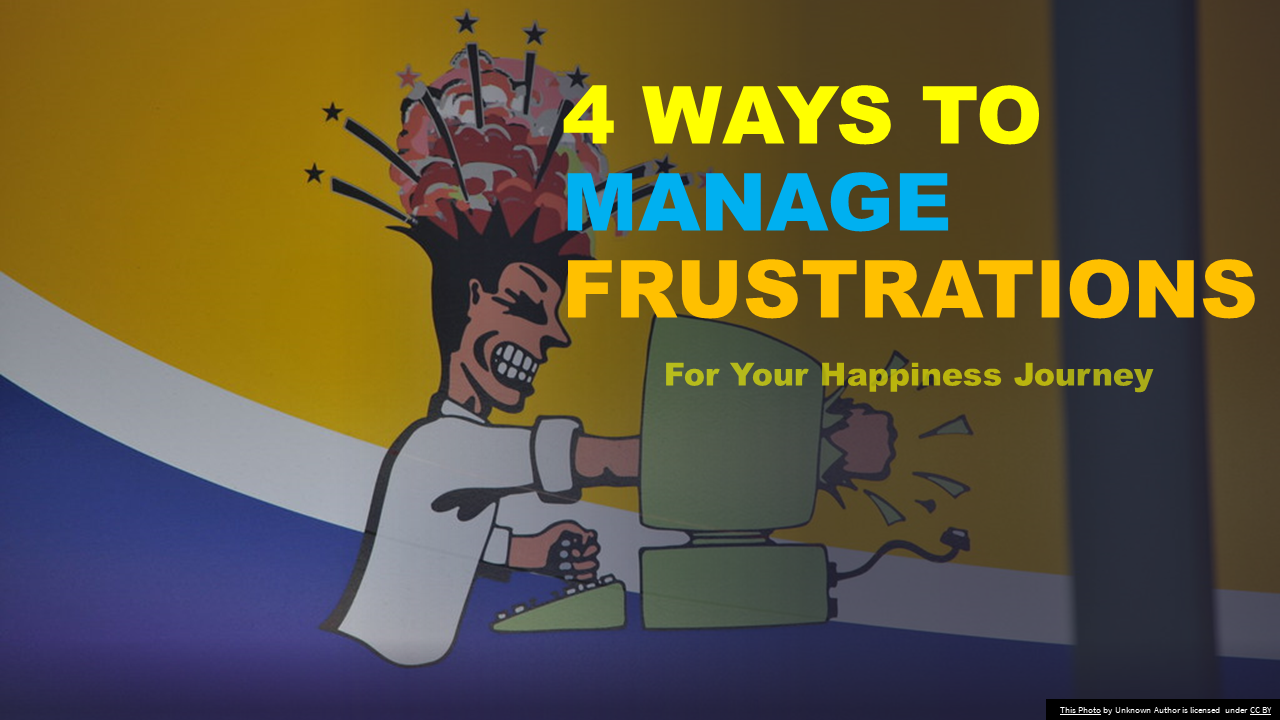As humans, it is natural that when things don’t go our way and we feel powerless to change a situation or its outcome, we get frustrated. We all express our frustrations in different forms: Hitting the table, snapping fingers, smacking lips, rolling eyes, sucking teeth, punching walls, we kick an object, we hit ourselves, we blame others, we use wrong/bad words, or we yell “Nooo!” When the car door gets stuck when we are in haste, we hit it. If we don’t like the meeting or we don’t like the boss’ decision, we complain or grumble in private.
In as much as it is natural to feel frustrated as humans, it is good to realize that sometimes when our deep desires or relevant goals are not achieved, the level of frustration we feel can be overwhelming and destructive to our happiness and productivity.

During frustrations, some of us lose our temper and say or do things that we deeply regret later. Others lose confidence in themselves and they quit or simply give up on their dreams or goals. Some people simply feel withdrawn, retreated, or be in isolation as they tend to wallow in self-pity. All these coping strategies or behaviors have the potential to limit our happiness, purpose, personal growth, and success.

How do we manage our frustrations in uplifting ways?

Here are 4 powerful tips to remember as you take daily practical steps to minimize frustrations:
1. Package your expectations accordingly.
Plan and set realistic expectations for yourself, others, and situations. When you habitually set expectations that are too high, they lead to frequent frustrations and disappointments when they are not met as expected. When you habitually set expectations that are too low, they lead to a lack of motivation which might lead to frustrations. Setting flexible (realistic) expectations (not too high and not too low) brings you fewer frustrations. Identify what and what falls within your control and focus on what you can control or influence.
2. Give a purpose to your frustration.
It’s inevitable that we all can go through frustration and the pain that comes with it. Here is the thing though: You can allow frustrations to take you down when your life circumstances do not match up with your perception of the way the world should be. We most times forget to give a purpose to our frustrations, failure, setbacks, or disappointments when we feel powerless over them. We are not powerless because we can always choose to change our views of them. We could use those frustrations and setbacks as opportunities to learn or as avenues to a greater purpose.
3. Define your “Good Enough.
At what level do you say, “this is good enough” and then be content with it? It is not a bad thing to strive for excellence, but it becomes joy draining when we strive for perfection all the time and we don’t get it. Do you want to reach perfection, but you can’t stand frustrations and setbacks? Well, you need to know when is your “good enough” because failure, setbacks, frustrations, and disappointments are all critical road signs to perfection. Most times our obsession with perfection breeds frustrations. Focusing on perfection brings fear to risk-taking. It slows progress and avoids constructive criticisms. These are all necessary ingredients for personal growth and success.
4. Produce a Positive attitude and Mindset.
Positive mindset does not allow frustration to settle in. An angry and negative mindset creates crooked thinking ability, but a calm and positive mindset keeps your thoughts straight. This allows you to identify and address the cause of frustrations and anger. Cultivating a positive attitude helps you go above negative feelings, and this motivates you to deal with your frustrations in healthy ways. Build on your confidence, strengthen your character, and boost your courage. Set your goals, set your rewards for accomplishing those goals, and maintain focus as you strengthen your positive attitude.
Be intentional to:
- Notice when you are about to get frustrated.
- Understand what is causing your frustration.
- Notice the form in which you start expressing it.
- Notice what you can do to minimize it without losing your positive attitude.
- Notice the practical steps you are to take to cope with it.


